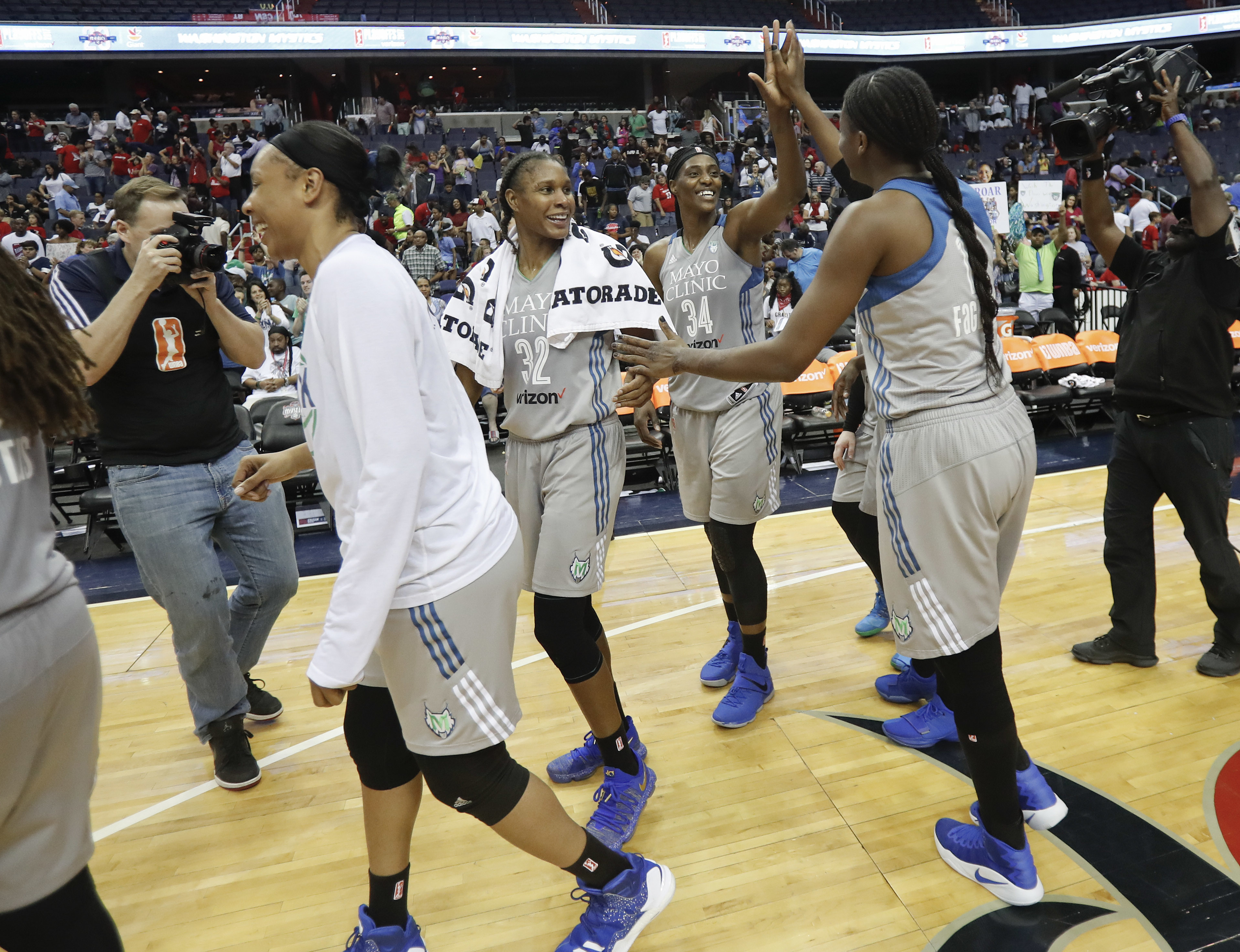
The WNBA playoff finals open on Sunday with the Minnesota Lynx and Los Angeles Sparks renewing their playoff rivalry. The Lynx are slight favorites.
They’re also underpaid; so are the players on the Sparks, and so is everyone in the WNBA, according to David Berri of Forbes who says the substantial wage gap can’t just be measured by comparing wages between the WNBA and its sibling, the National Basketball Association.
It’s not surprising, mind you, that the wages between the NBA and WNBA are lower. The WNBA takes in less money than the guys who play basketball. It also draws about 10,000 fewer fans per game.
Berri guesses that the league’s income from all sources has increased in the last few years. But the average salary paid to the female players is going down. And the percentage of league revenue going back to the people who make it possible — the players — is small.
That means that in 2017, the WNBA paid no more than 22.8% of its revenue to its players. (The total revenue figure is likely to be significantly higher than the estimate used in the calculation; the total salary figure is not.)
Two years ago, I used the same approach to estimate that the WNBA players were receiving only 33% of league revenue. So it appears the gender wage gap in professional basketball is worsening.
If the WNBA paid its players 50% of its revenue, salaries would be quite a bit different. To begin with, the average salary wouldn’t be $75,000. If the WNBA gave $25.8 million (i.e., half of $51.5 million) to its players, the average player would take home about $164,000.
Despite being the league MVP, then, Fowles is paid only two-thirds of what an average WNBA player would get if the WNBA players were treated the same as their NBA counterparts
Lynx star and league MVP Sylvia Fowles is making $109,000 this year. Berri calculates that if the WNBA paid its players the same share of revenue that the NBA pays, she would be paid $1.2 million.
Not much is going to change, he acknowledges. The WNBA labor agreement doesn’t expire until 2021.
